As I breathe in, a soothing voice tells me to remember a moment of being surrounded by pure love. I think of my friend’s wedding. I immediately feel it. The mindfulness video is working. I am sensing the vibrating frequencies of joy and universal connectedness that the guided meditation promises. It better work. It’s a breezy autumn morning at a commercial apartment stacked with IKEA furniture. I’m in Kuopio, a city of about 100,000 quiet Finns, four hours north-east of Helsinki. ANTI – Contemporary Art Festival has paid me to be here for two weeks, from 2 to 15 of September. I’m taking part in an artist lab (you could call it a workshop), as well as writing about the festival’s five day program, which begins next Monday. The lab is part of an EU-funded project titled ‘Future DiverCities‘ that supports events dedicated to creativity and urban issues all around Europe. Work trips of this kind usually turn me into a negative creep, hence the self help exercise. I’m trying not to get depressed again.
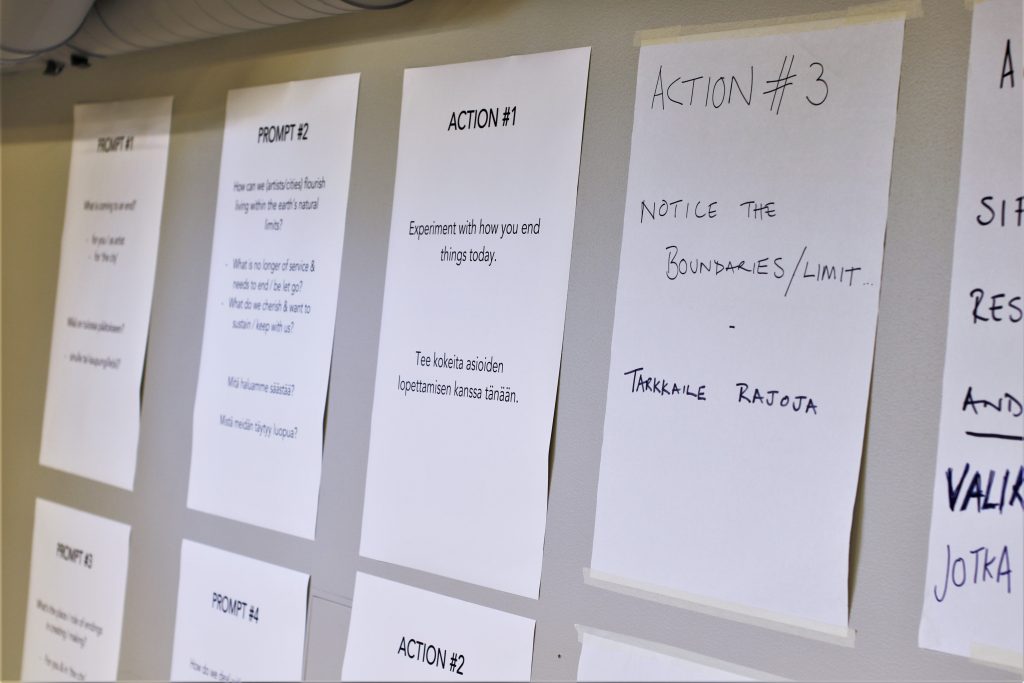
The proposal of doing this lab and catching hours worth of performances at a festival scared me initially. I don’t possess the energy levels for high-intensity socialising and art-viewing. But here I am. All I need to do, as always, is to follow the Serenity Prayer: “God grant us the serenity to accept the things we cannot change, the courage to change the things we can, and the wisdom to know the difference.” I can’t change the way art events are produced. But I can change my attitude. Should I change my taste, too? That, I feel, is my biggest obstacle. I don’t like most things.
Prior to my arrival, festival manager Jyri Väisänen asks me for a profile pic. I forward a link to my Instagram account, from which they choose a bleak selfie that’s overlaid with “MY TASTE IS MY PRISON” written with a kooky font. I don’t know it yet but throughout my time in Kuopio, the words of my meme will haunt me. The first few days are devoted to practicalities and settling in. A welcome dinner, introductions, the lot. This year, ANTI’s lab takes place inside a large retail space downstairs of a desolate mall, next to Kuopio’s market square. The mall is the kind of place that tends not to come back from the draining effect of the mega shopping centres outside the city.
There are seven of us artists in the lab. Some have travelled over to show work in the festival. We sit down each morning to discuss a prompt given to us by our facilitators Chris Higgins and Martin Gent, from Map Consortium, a UK-based arts consultancy agency. The discussion is calm, grounding and at times heartfelt. Chris has led the lab three times before. This would be the last one for now. Our header, ”The End”, is literal. Fittingly, ANTI artistic directors, Johanna Tuukkanen and Gregg Whelan, have chosen death as the theme for the festival this year.

Every day, in our vast lab space that looks like a start-up office has just scrambled itself together there, with added Subway fumes next door and airport-lite aural ambience of the mall filling the air, we come up with various exercises. The audience visiting the space can try them out: record your last words, write down what’s ending for you, look at a video we did, experience having your outline being drawn on a piece of paper while you’re laying down, and so on. These are not the kind of things I’d end up creating on my own. Nobody brings up the issue of individual, or any, taste. I would usually do that but the meditation videos are guiding me towards acceptance. Why not try something new? What do I have to loose? So I join in the conversation, help where I can, while taking time off to write, and conserve energy by not drinking all the time or complaining to my friends online. I cannot exaggerate what a difference this change in approach makes. It feels very good to be outside your own aesthetic constraints.
The aforementioned actions are what we do for the two-week length of the lab. And somehow it all makes sense to me. As a part of a lab exercise, I make one of my all-time favourite video collaborations with a local artist, Veera Launonen. The video is short and playful, born out of those rare moments of spontaneous and sincere collaboration, with objects found from a thrift store that also has Veera’s late grandmother’s furniture on sale. We shoot parts of the video against that furniture. The loving vibe in the lab enables me to find the person I once was, before depression, before having learned to hate the art world, and thinking sarcasm is a tool of all trades. There’s a time for criticism, but that’s not all the time.
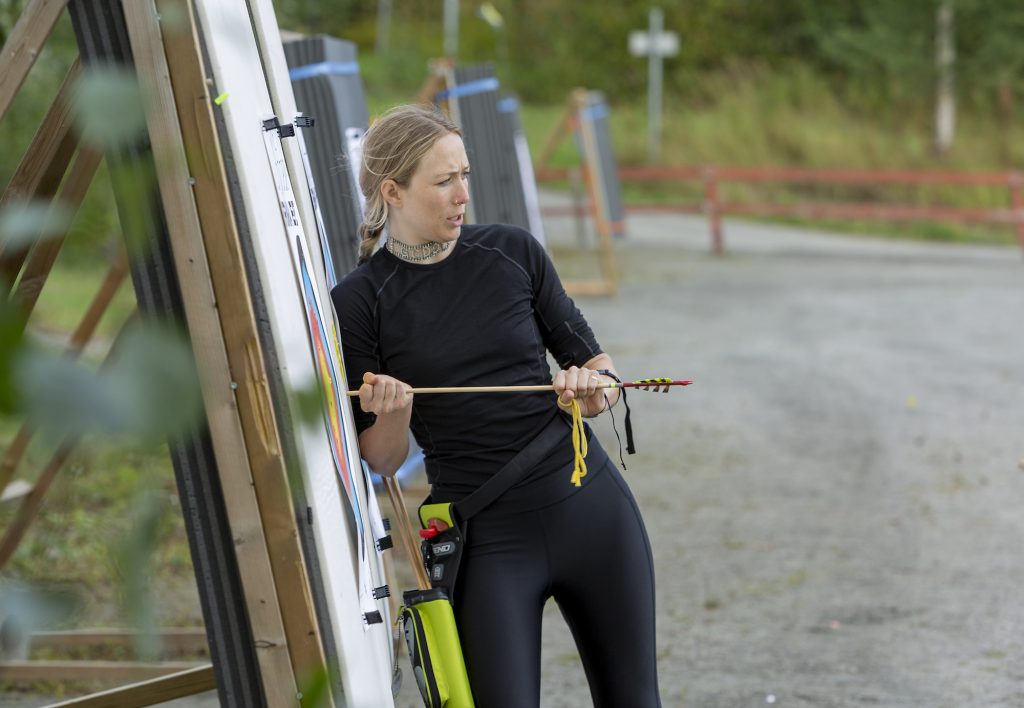
Our first week together goes by in a breeze. Suddenly it’s week two, and we’re kickstarting the ANTI festival. I end up hosting impromptu karaoke. It’s great. I did not know ”Lazarus” by David Bowie to be the perfect ending (thank you, fellow lab artist Lauri Hei) for a night of high-pitched ABBA screamfest. And then it’s time to see the actual performances, many of them, every day. Singing together might be the highest form of art; where can we go from there? The festival’s death theme seems overshadowed by preparations for the upcoming disruption of our societies following climate crisis.
One day, I’m taught first how to shoot a bow during Loren Kronemyer’s ‘After Erika Eiffel’, a performance taking place at an archery range, and afterwards witness the skinning and slicing of a deer (‘Dear Deer’ by Mimosa Norja). Somebody from the lab cooks a stew a few days later, in the early hours after a long night, from the meat handed out during Norja’s piece. At a care center, Lara Thoms and their team tell me all I need to know about cremating a body (‘The Director’), and a bit about acting, too. Instead of prepping, the festival might also be read as a role-playing workshop for developing our serial killer characters.
Lucy Willow’s ‘The Mourner – Lamentation in Dust’ consists of the artist arranging enchanting assemblages and images from scraps and dust, in a room in an industrial space, for four hours each day. The fixation on magical ordering of elements fits surprisingly well with the prepper/Dexter vibe I picked up from performances I saw earlier. Seeing the action reminds me of the maintenance-as-art-practice of Mierle Laderman Ukeles, but also of Bruce Nauman’s early studio films, with a spoonful of contemporary witchcraft aesthetics added to the mix. Willow’s movements are fast-paced and somewhat unceremonious, making the piece that much more accessible. I dream of spending my mornings in this grimy industrial building near the train tracks, taking in the tranquil atmosphere, but the lab schedule won’t allow it.

An immersive theatre spectacle created by a group called Nesterval, loosely based on a story by the 19th century Finnish author Minna Canth, goes for a different mood. For almost three hours, we’re following actors sporting historical costumes in an outdoor museum complex consisting of a bunch of houses and sheds. You can see Kuopio’s stale residential buildings outside, giving you the sense of being in a film set. Together with a friend, we manage to steal some apfelschnaps without the actors noticing. I’m loving the performance from thereon.
The show ends up at the church, for a wedding rehearsal. There, the piece goes into full-on camp mode. I join a group of women from the fictional village giving emotional support to the soon-to-be young bride. One of the actors won’t at first let me in, saying it’s for women only. After the show, one of the actors comes up to me, saying ”I apologize that my character was so transphobic.” They seem honest and understanding, and not the least woke-performative. I smile and tell not to worry. The moment highlights the dynamics of navigating between historical re-enactment and audience interaction. Another thought comes to mind. Festivals hosting interactive works can compete for the same audience as escape rooms or firms offering corporate recreational activities. It should be a no-brainer for such target groups. All the events are free, after all. Why not go and shoot some arrows with your team members? A colleague tells me they saw an escape room themed performance in some swish international festival recently.
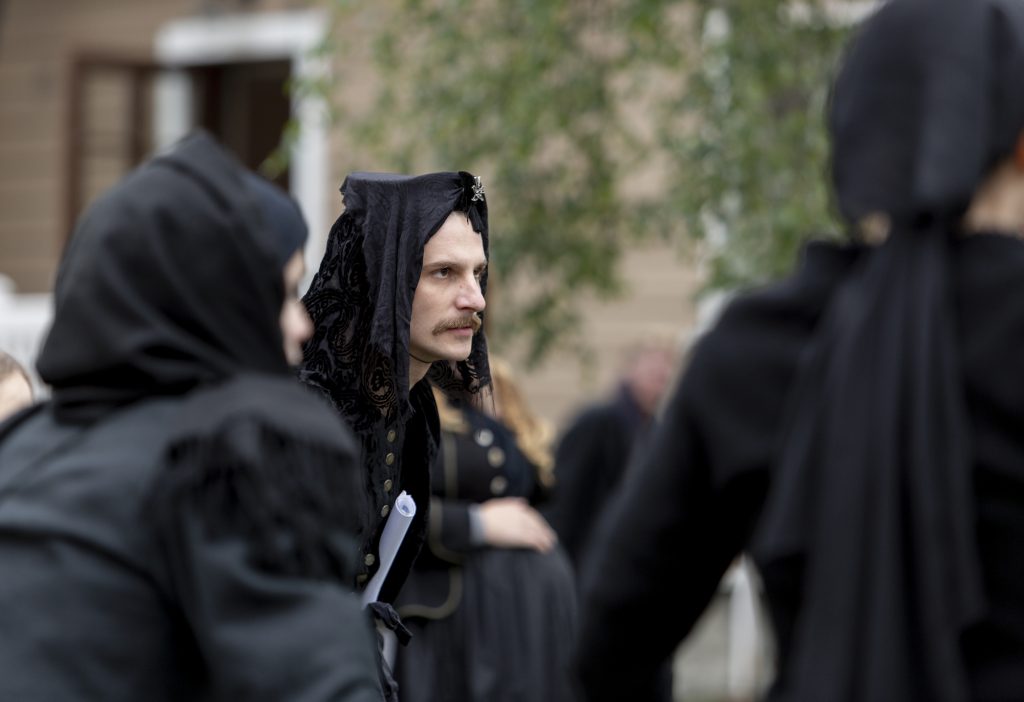
While corporate parties are yet to be found as target audiences for art festivals, I’m feeling increasingly unsure if I’m the target, either. It’s that taste thing again. The art here doesn’t look like the messy and sloppily planned art I swear by. ANTI mostly presents thought-out, flawlessly executed renderings of artfully formulated concepts. I have nothing at all against them but half-way through the festival, I’m craving to see a performance that is as beautiful as it is clumsy and unclear. It figures the work at ANTI that touches me the most is the least pragmatic.
The one sheet for Cuqui Jerez’ ‘The Phenomenon of Fictious Forces’ goes like this: ”In this piece more than 10,000 objects fly entering the stage. That’s it!” That, of course, is not it. A dramatic, rapid-fire piano etude (”Brahms?” I hear someone say) is playing on loop for an hour or two, while somebody behind a huge blue curtain fires stuff on stage. I have no idea how long the piece lasts. The repetitive action does away with time markers. At first, we see cardboard packages being thrown. They look beautiful. More objects, such as black balloons, inflatable rubber mattresses and a bunch of neon coloured trinkets, begin to appear. This garners some laughs at first, because pink junk is fun. Then, a contemplative mood settles in. That’s the emo magic of minimalist art: after a while, it will depress you by reminding you how everything lacks meaning. Some of my colleagues get agitated by the seeming ecological waste of the piece, whereas others find the work lacking in content. A friend, who grew up in Kuopio, marvels at the fact that something this wacky would happen here. Some of us are enthralled by the strange hold this simple gesture of throwing things from right to left, from future to present, can have on you. Jerez’ piece is a curator’s dream: you can project any theme you want on it. And that, really, is it.
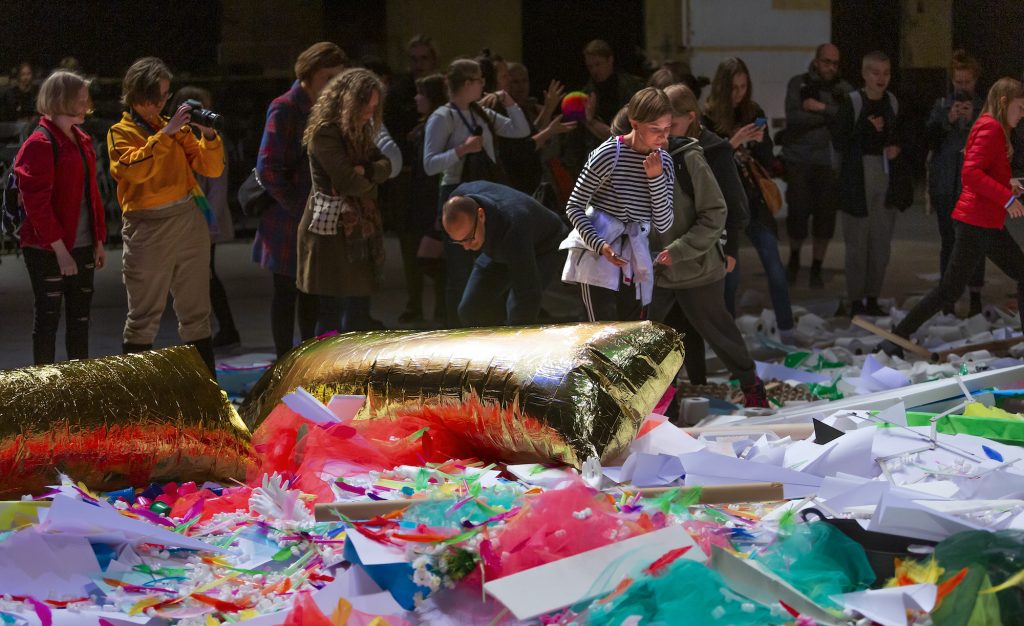
After the performance is over (the artist never appears), most of us go study the debris. “I’m poor!” quips a student who’s packing their tote bag to the brim with toilet paper rolls. I pick up a spotless pair of gloves to fight the cold, only to be told to leave it there. The artist will ship the stuff to the next performance. As I’m watching the post-performance goofing, it strikes me how the difference between an interactive or socially engaging piece and a solo performance is basically a question of who is throwing the junk around. Had Jerez been hired to work with a community in Kuopio, the artist might’ve invited everyone to play with the objects and call it collective material research. Or maybe people in Kuopio could’ve brought stuff they don’t need any more for Jerez to throw. I get that, for the sake of visual unity, the objects must look new, untouched, and not like random junk. Though I’m not sure if it would’ve been so different. But then I’m not sure the artist has to be flown in for a work like this to begin with. Whatever happened to performance art as a set of instructions? The artists inventing the trope, such as Yoko Ono, basically foresaw C02 minimalism in the 60s with their works that didn’t depend on the artist being present. The art was all in your head. Perhaps Marina Abramović spoiled it with their authenticity cult. Would it be worthwhile to have a festival for performance art that’s fully executed by people who happen to be on site already, following directions from artists? And is that what’s going to replace the habit of flying people in for a few days to create added value with their presence?
I enjoy Jerez’s work immensely. I’m happy I didn’t have to learn anything for a change, or shiver outside. I’m allowed to sit in a warm hall, immersed in my own thoughts. If that’s bourgeois, then pass me the Scandi organic wool blanket, cancel me from your Brecht study group, and close the door on your way out. In considering performances about or in need of laborious pragmatic tasks, one could argue the leftist-Christian moralist tendency to steer art towards “real life” has given us art as a chore. Participatory art, which has a footing in ANTI historically (this is its 18th run), illustrates this idea. It requires the audience to provide the source for the artist’s practice. Much like ad campaigns encouraging consumers to share their story with a corporate hashtag, artists today want to hear your story and turn it into their material. That is the dark read. I don’t think it’s anywhere that simple, as inviting as that might be. It’s healthy to have an ounce of cynicism but, in my experience, too much of the gloomy stuff will drain you of all your energy and a will to live. A more sober interpretation might look something like this: any realm of society, from corporate to civic, can create meaningful change and lasting communal binds. There’s clearly value in doing things together, and it doesn’t have to feel like a chore. But there’s also value in witnessing a single human expressing themselves on a stage. “There’s no need to hate any given concept or practice”, I tell my dark self. If you think you’ve landed on an easy target to hate on, it means you’re not good at thinking. That’s the boring read, albeit the one I swear by.
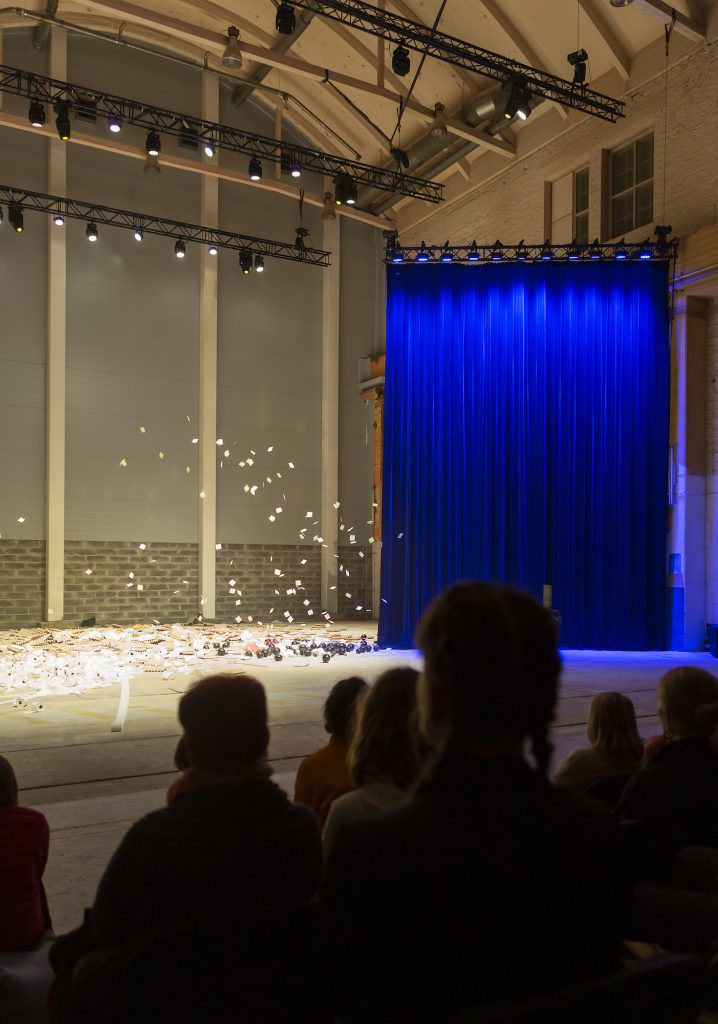
Let’s look at something else. Robin Hood Asset Management Cooperative, founded in 2012 in Tampere, Finland, is perhaps the most exciting “artivism” project that came out of the Occupy era. The ragtag collective of economists and artists was based on the idea of a parasite: they wanted to devise a finance instrument that would suck money out of the stock market. It was also participatory. They proposed,”‘Invest your money in us and be part of a wild experiment (which, as I understand, failed).” Robin Hood didn’t attempt to draw the perfect blueprint for ethical human agency but accepted the world as it is, and went for the money so they could do what they want. And that, my friends, is the sexy read.
On the penultimate day, there’s a party for the ANTI Live Art Prize, which will be awarded to choreographer Dana Michel. I leave the event early, pack my bags, and thank the universe and the guided meditation videos for a chance to experience all this. My taste hasn’t changed, though. I like the prison I’ve built for myself but I do appreciate the visiting hours.**
ANTI – Festival for Contemporary Art was on in Kuopio, Finland, running September 10 to 15, 2019.













